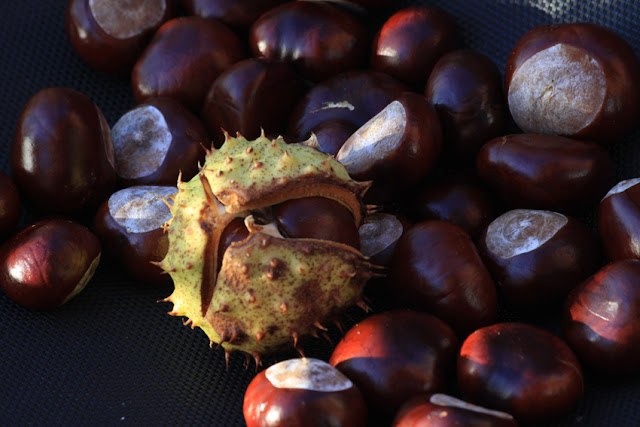This time of the year we can find plenty of sweet chestnuts (Castanea sativa) available in most urban parks or in any little piece of nature where the chestnut trees were allowed to grow and do their job.
Chestnuts are highly nutritious and they rank among some of the most ecologically responsible foods you can think of.
The only thing you need to know is how to tell the edible chestnuts from the horse chestnuts, which are usually shedding their fruits at the same period.
Here are some pictures of the sweet chestnut to help you identify them.
The main features to help you identify the edible sweet chestnuts are the little "tail" on the nuts, their husk and the shape of the leaves.
Here are some pictures from the horse chestnut (Aesculus hippocastannum) so that you can see how different they are from the sweet chestnuts. Note that this plant and nuts are NOT edible. That is why it is so important to learn the clear difference between the two of them.
The nuts of the horse chestnut are round without the little "tail". Also the husk contains less spikes compared to sweet chestnuts.
 |
| this is how the leaves of the horse chestnut look in spring time. Quite different than the leaves from sweet chestnut |
Here is a video that helps to make the distinction between these two plants.
"Chestnut" side-by-side comparison - Horse and Sweet







No comments:
Post a Comment
Note: Only a member of this blog may post a comment.